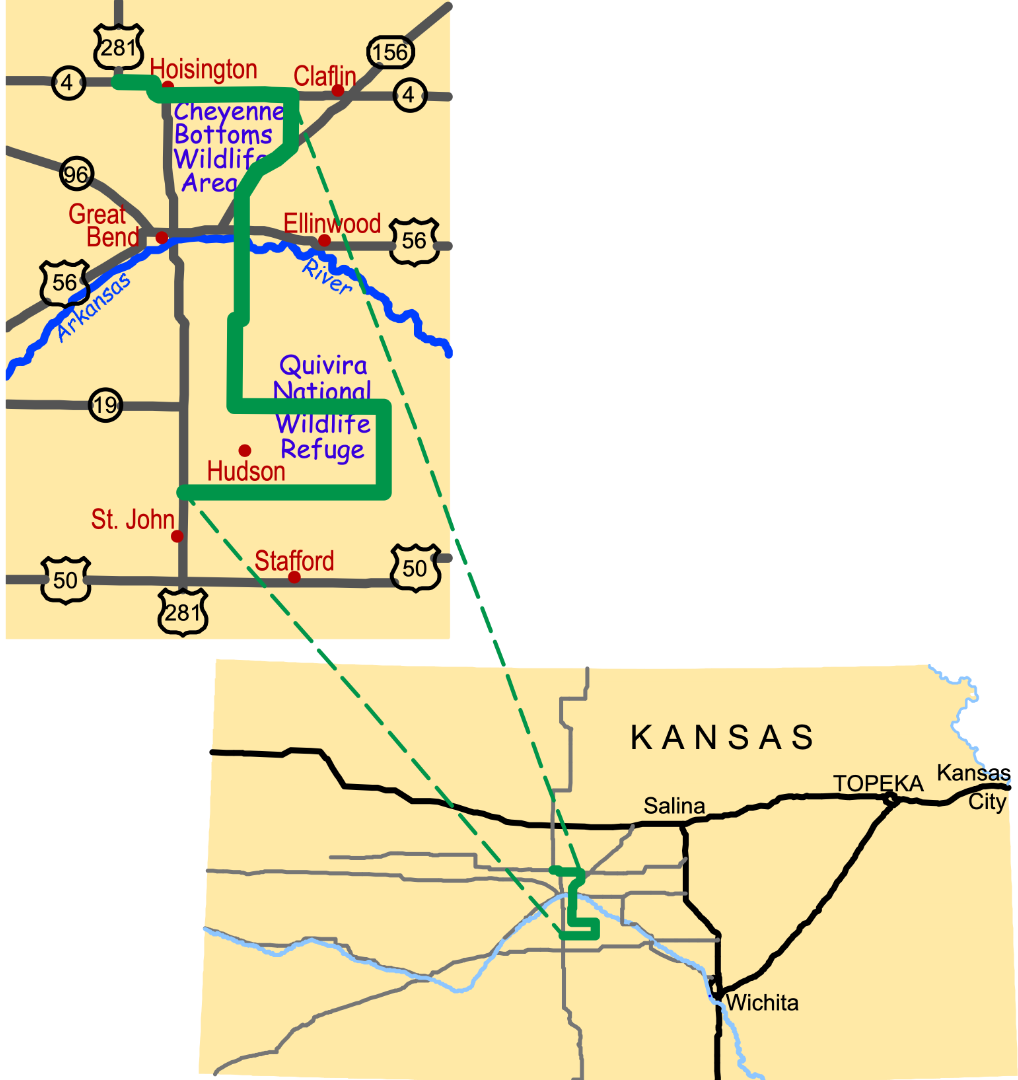Working...

Birds of the Woods and Prairie
Biodiversity in the Heartland
Eastern and western meadowlarks, eastern and western kingbirds, Baltimore and Bullock's orioles. Only along a narrow sliver of the Great Plains, including here along the Byway, can you see these closely related "sibling species" shoulder-to-shoulder in the wilds. And that's just one of this region's birding bonanzas. Many of the birds you'll see along the Byway only live here on the Great Plains. Upland sandpiper, lark bunting, greater prairie-chicken, scissor-tailed flycatcher, Mississippi Kite*, Bell's Vireo**, and Harris's sparrow are just a few of the species that seldom found east or west of the Heartland.
Some prairie birds-like the northern bobwhite (quail), ring-necked pheasant, and wild turkey-draw hunters to this region. Pheasants, native to Asia, were first introduced in Kansas in 1906 with the release of 3,000 birds in 84 counties. Look for them in croplands and prairies virtually anywhere along the Byway.
Mississippi Kite
Watch for this knife-winged hawk slicing over the cottonwoods. You may see it swoop to grab a dragonfly and eat its prey as it flies. One of the most spectacular raptors of the Great Plains, the Mississippi kite nests in "urban forests" and mature cottonwoods along the Byway.
Wild Turkey
By the 1950s, the wild turkey had been virtually eliminated from Kansas, largely due to habitat loss. Through conservation efforts by the state and its partners, turkeys now prosper across Kansas and along the Byway. For information on turkey hunting, contact the Kansas Department of Wildlife, Parks and Tourism.
Motion and Change
Before Euro-American settlement, trees here were limited to scattered clumps along the Arkansas River and local creeks. As communities grew, residents planted trees and shrubs, creating "urban forests." These mature forests now attract breeding birds that were absent only a century ago, like the Baltimore oriole.
Download the interpretive panel: Birds of the Woods and Prairie located at the entrance to the The Nature Conservancy Cheyenne Bottoms Preserve on K-4 Hwy east of Hoisington.
To listen to more information click on the Audio Tour
Go to the Gallery to view photographs contributed by visitors to the Byway.
* Mississippi Kite
This elegant, graceful, medium-sized hawk cuts an elegant profile over Byway woods and grasslands. The Mississippi kite spends much of its time in the air, using its talons to catch large insects, mostly dragonflies. It will eat many other small animals as well, including reptiles, amphibians and mammals.
In autumn, Mississippi kites gather in large flocks to migrate to South America-some of them fly as far as northern Argentina! Unlike many other raptors, Mississippi kite populations are on the rise and are increasing their range. Here along the Wetlands & Wildlife National Scenic Byway, they're benefited by extensive tree planting in local communities.
** Bell's Vireo
This small, insectivorous bird prefers to nest in low, dense vegetation, particularly along rivers and streams. Along the Wetlands &Wildlife National Scenic Byway, listen for its distinctive song coming from scrubby woodlands, old fields, or thickets. Look for it in the sand plum thickets at Camp Aldrich, in Great Bend.
More Birds and Wildlife pages...
Birds of the Wetlands and Water
Wings Over the Water
Home on the Range
Jackrabbit Run
Magic Muck
Prey and Play



